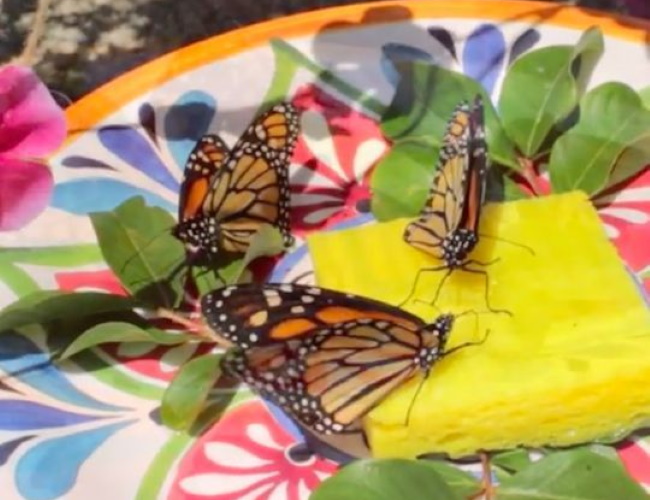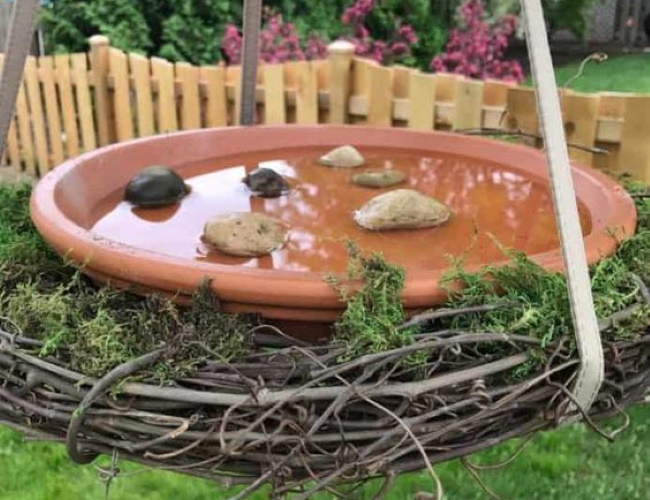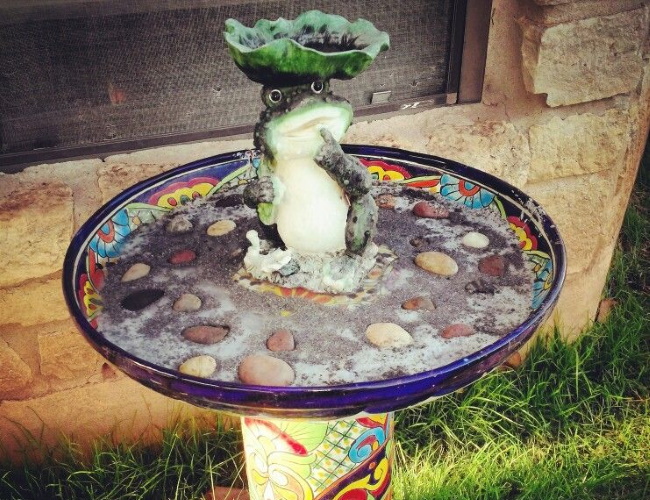With a little planning a butterfly garden can add entertainment to your landscaping, as well as creating a beautiful and peaceful place for you to enjoy the butterflies as they come to visit you. Besides bringing a magical beauty to any garden, butterflies help promote growth by pollinating flowers. There are two types of plants that you will need in your butterfly garden. Nectar plants, which are the plants that butterflies like to feed on, and host plants, which are plants that butterflies lay their eggs on and their caterpillars like to eat. Host plants for monarchs are milkweeds – Asclepias species and Gomphocarpus species. Autumn is an excellent time to be starting a butterfly garden. If you plant host plants now, they will be well-established for the summer. You may also wish to add some adornments to your butterfly garden that will also help to attract butterflies, like a butterfly house or two and some butterfly feeders.
Once you have started your butterfly garden, you can be proud that you have made a habitat for butterflies in your own yard, which helps with the conservation of the quickly disappearing monarch butterflies. You will certainly want to place your favourite outdoor furniture near so that you can enjoy all of your visitors day after day.
Butterflies feed by using a straw-like structure called a proboscis to sip nectar from plants – and before they sip they sense the nectar quality with their feet! When not feeding, the proboscis is rolled up and tucked underneath the butterfly’s head. Butterflies use chemical receptors to detect fragrances in the air. Flower fragrances help attract butterflies to a flower garden. Flowers with strong sweet scents will bring them flying in.
Also, never use insecticides on your butterfly garden. Remember that butterflies are an insect species and these chemicals will kill them. If you find the right plants for your butterfly garden, you will help to save the butterflies and have a wonderful place in your yard to enjoy all season long.
Some Garden Plants Providing Nectar
Butterflies are attracted to groups or stands of plants that provide a mass of colour. Try and get a mix of colour, height, texture and flowering periods. As they need to land in order to feed, the shape and arrangement of the flowers needs to provide a good landing surface.
Providing several different types of nectar plants in your butterfly garden that have varying blooming stages is the ideal way to attract butterflies throughout the season. Be sure to have several types that bloom in the late summer and early autumn because this is when butterflies are the most populous. For the best looking butterfly garden, make sure to put the taller plants and flowers, such as sunflowers behind the shorter ones.

Ageratum

Alyssum

Aster

Buddleia

Calendula

Candytuft

Chrysanthemum

Cineraria

Cleome

Cockscomb

Coreopsis

Dianthus

Gaillardia

Gazania

Hebe Koromiko

Marigold

Mexican Sunflower

Osteospermum

Pride of Madeira

Purple Coneflower

Rudbeckia

Salvia

Scabiosa

Snapdragon

Valerian

Verbena
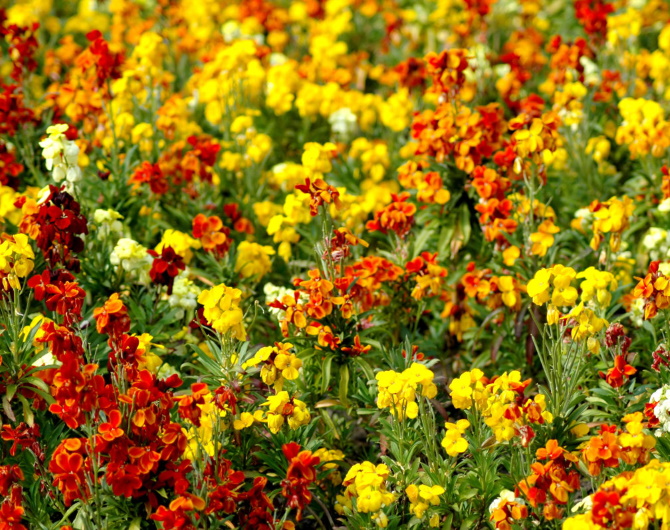
Wallflower

Zinnia
Milkweed Plants
Adult butterflies will visit for a longer period if they find plants to lay their eggs on. The young caterpillars feed on the host plants until they form their chrysalis.
The host plants can be completely eaten by monarch caterpillars, so it’s best to grow a number of plants to ensure enough food, this is necessary for their survival. Swan plants are toxic to people and livestock, and the milky sap can cause skin reactions, so wear gloves, protect your skin and eyes from sap, and wash hands afterwards.
Monarch Butterfly caterpillars eat ONLY milkweed. Do not try to offer them alternate food plants. Milkweed is the only plant food that will keep them alive.
Common Milkweed Available in New Zealand

Swan Plant
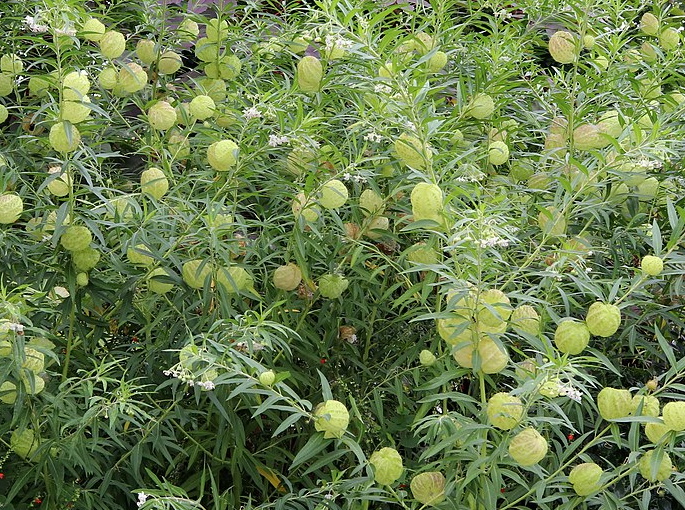
Giant Swan Plant

Tropical Milkweed

Swamp Milkweed
Make Food for Struggling Monarch Butterflies
Food Source 1
- 4 parts water
- 1 part granulated sugar
Boil the solution for several minutes until sugar is dissolved, and then let cool. Serve the solution in a shallow container with an absorbent material such as paper towels saturated with the sugar solution.
Bright yellow and orange kitchen scouring pads may be placed in the solution to attract butterflies and give them a resting place while they drink.
Place the feeder among your nectar flowers on a post that’s 4-6 inches higher than the tallest blooms. Extra solution can be stored in your refrigerator for up to a week.
Puddling
 Like humans, having a water source is essential to protect monarch butterflies. In the overwhelming heat of the summer, butterflies will gather extra minerals and vitamins through a behaviour known as puddling. Through puddling, monarchs will take small drinks in shallow water areas rather than diving into a deeper water source. While it is important to create a butterfly garden rich with nectar plants and flowering shrubs, having a water source in the area is equally essential to promote butterfly survival. Creating a garden with water features that gives the butterflies an opportunity to puddle only helps make your garden space friendlier for future monarch butterfly populations.
Like humans, having a water source is essential to protect monarch butterflies. In the overwhelming heat of the summer, butterflies will gather extra minerals and vitamins through a behaviour known as puddling. Through puddling, monarchs will take small drinks in shallow water areas rather than diving into a deeper water source. While it is important to create a butterfly garden rich with nectar plants and flowering shrubs, having a water source in the area is equally essential to promote butterfly survival. Creating a garden with water features that gives the butterflies an opportunity to puddle only helps make your garden space friendlier for future monarch butterfly populations.
Shallow water is more attractive than deep standing water for butterflies. You can create a butterfly oasis in the middle of a deeper water feature by simply adding in rocks, marbles or pebbles to make a perching paradise for the butterflies to puddle in.
Flowers are butterflies’ main source of food, and since there are not a lot of nutrients found in flower nectar, male butterflies of most species land at the edge of a wet area and feed on essential salts and other nutrients found in the sand or mud. By sipping moisture from mud puddles, butterflies take in salts and minerals essential to reproduction and other functions.
When butterflies mate, the nutrients are transferred to the female and these extra salts and minerals improve the viability of the female’s eggs, increasing the chance of passing on their genes to another generation. This behaviour is known as “mud puddling” or just “puddling” and providing this type of area will be a beneficial addition to your butterfly garden.
Creating a Puddling Area
Here are a couple of ideas for creating puddling areas in your garden. If you have a dirt driveway or a fine (small) gravel walkway such as decomposed granite in your garden, sprinkle rock salt, crushed pellets used in water softeners or even better crushed pieces of a mineral block used for cattle and deer, and water them into the gravel or dirt. Remember that too much salt can contaminate the soil.
An alternative puddling area that will not contaminate the soil is to put the sand, gravel or mud into some kind of container. These can be placed above the ground or sunk at ground level.
Permanent puddles are very easy to make by burying a shallow bucket to the rim, filling it with gravel or sand, and then pouring in liquids such as stale beer, sweet drinks or salt water.
Puddling Area Ideas
Create a Puddling box: mix ½ cup salt with 4 litres of sand, pour into a waterproof box and keep moist.
Place coarse sand in a shallow pan and soak with Gatorade and then insert the pan in the soil of your habitat. Be sure to keep the sand moist.
Use a small dish with some compost; keep damp with water.
A damp sand patch, baited with a small amount of manure, fermenting fruit such as
bananas will attract butterflies.
To design a successful puddling pool, all you have to do is duplicate butterflies’ natural preferences. Butterflies prefer the safety of puddles instead of backyard ponds which can overwhelm them. With shallow puddles, butterflies congregate around the damp edges instead of landing in the water. They visit puddling sites during the heat of the day, typically between 10 am and 2 pm.
- You may use a Shallow Birdbath
- Choose a Shallow Pan or Dish (Terracotta Saucer)
- Fill saucer with Sand or Gravel
- Add Larger Flat Rocks around the Edges (For the Butterflies to Land / Rest on)
- Choose a Sunny Area
- Bury it to the Rim in the Butterfly Garden
- Keep the Puddle Consistently Moist
Typically Butterflies receive enough moisture from the nectar the sip, however the nectar lacks the minerals the male butterflies need. After you have made a puddling pool ~ sprinkle salt on the puddle occasionally. Then you can add… overripe fruit, stale beer or leaf compost from time to time. This will provide the Salt & Nutrients backyard butterflies need!
